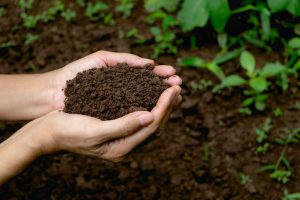As sunny days dominate your local area, you might consider growing your own garden. The greenery and potential blossoms will beautify your property, and it can also supplement your grocery needs. Learn how to start a garden so that the entire family can enjoy fresh vegetables pulled straight from the earth.
Choose Either Containers or Ground Locations
Your first consideration involves using pots or ground locations. If you have limited space in your yard or only a small patio, growing vegetables in containers is an easy decision. Simply use one pot for each vegetable that you’d like to grow. Make sure the pots have drainage holes for excess moisture release.
Otherwise, plant your garden in a sunny area within the backyard. Plan to use 100 square feet or less as your starting location. Creating a huge garden at first can be overwhelming. It’s always better to start with a small area and branch out in later years as you gain more experience.
Try a South-Facing Location
Successfully starting a garden means choosing an area with plenty of sunlight. Study your property’s surroundings for a few days. Make mental notes of where sunlight strikes the land for most of the day. Ideally, vegetable gardens demand between six to eight hours of light each day in order to have enough energy to produce those tasty foods.
A south-facing location at your home is where you’ll usually find enough light for a garden. Prune back trees and bushes if necessary. Shade across a garden for even a few hours can hinder growth.
The soil’s quality directly impacts your garden’s success. Consider the type of soil in your garden. Vegetables need soil that can properly drain with a lightweight texture. Most soil requires an amendment or two, such as organic matter, so that plants can grow strong roots as well.
If you’re using containers, potting soil with some vermiculite is ample enough to support your growing plants. Fertilizer isn’t always necessary at first. Depending on the type of plants, add fertilizer later on in the season as nutrients decrease within the planted area.
Decide Between Seeds or Starter Plants
Seeds are perfect choices for a budget-friendly garden. Their value grows as the plants mature. If you want plants that are a bit more established, starter plants are great tools to familiarize yourself with gardening. Place these seedlings in the ground, and they grow with vigor in the right conditions.
Keep in mind that you don’t want every carrot, lettuce or radish to ripen at once. Try to stagger out your plantings in either seed or starter-plant forms. You’ll have a few plants ripen at a time so that you can use the vegetables with little to no waste.
Sketch Out the Garden Beforehand
Planting four to five different vegetables is a good goal for a first-time gardening experience. For the best success, sketch out how you want them arranged before even stepping foot in the garden. Take a look at how large each plant will be at maturity too. They might spread out across the garden or grow tall. Place any tall plants on the north side of the garden. They’ll receive enough sunlight without shading out the rest of the plants.
Space out the plants too. They might be small at first, but they can grow large in time. Limited space can impede production. Give the plants space with mulch covering any open areas to fight off weeds.
You may follow all the garden basics, but leaving the plants unattended once they’re established is a common mistake. Plan out a daily schedule that involves some time in the garden. It’s critical to pull ripe vegetables as soon as they’re ready. This harvesting process encourages the plant to produce even more vegetables.
Keep an eye out for weeds too. They can quickly overtake a garden even with sufficient mulching along the plants’ bases. Pull the weeds with the root intact. Your vegetables won’t have to compete so much for nutrients with a clear, growing space.
Depending on your climate, you may or may not need to water each day. Damp soil with good drainage is the goal for any vegetable garden.
Once you learn how to start a garden, improve upon it each year. Because most vegetables are annuals, plant new selections each spring so that you can see what grows with vigor or quickly dies back. Every person in the family can benefit from healthy vegetables grown right on your property.






